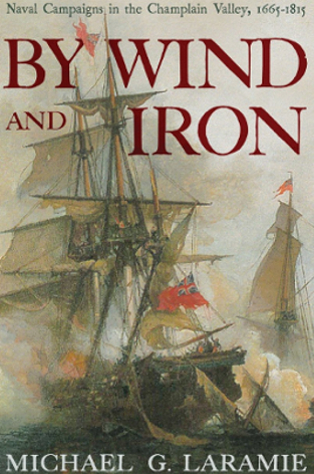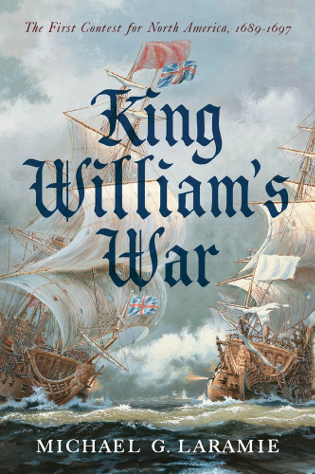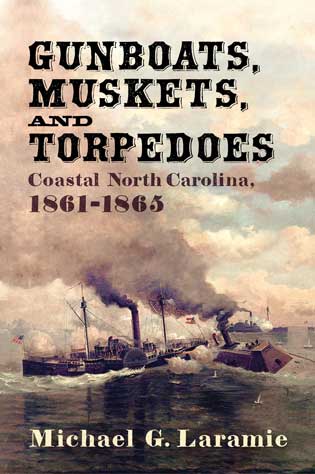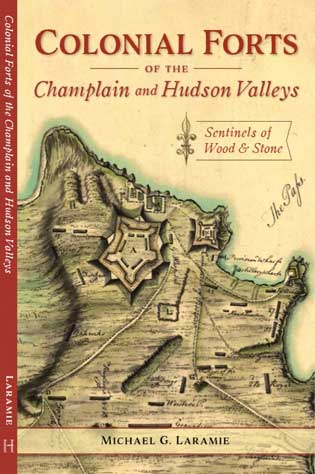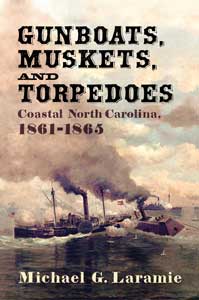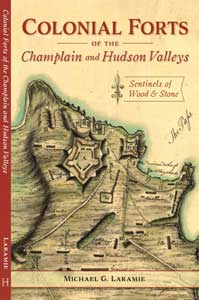 The European Invasion of North America: Colonial Conflict Along the Hudson-Champlain Corridor, 1609-1760.
The European Invasion of North America: Colonial Conflict Along the Hudson-Champlain Corridor, 1609-1760.
From Champlain and Hudson’s initial voyages some 400 years ago, to the surrender of Montreal in 1760, The European Invasion of North America: Colonial Conflict Along the Hudson – Champlain Corridor, 1609-1760 offers unprecedented coverage of the 150-year struggle between New World rivals along this natural invasion route – a struggle which would ultimately determine the destiny of North America.
Unlike other volumes on this period, “The European Invasion of North America” includes extensive coverage from the French and Dutch as well as British perspectives, examining events in the context of larger colonial confrontations. Drawing on hundreds of firsthand accounts, it recaps political maneuvers and blunders, military successes and failures, and the remarkable people behind them all: cabinet ministers in Paris, Amsterdam, and London; colonial leaders such as Stuyvesant, Frontenac, and Montcalm; shrewd diplomats of the Iroquois Confederacy; and soldiers and families on all sides of the conflict. It also highlights the growing friction between Britain and her American colonies, which would soon lead to a different war.
By Wind and Iron: Naval Campaigns in the Champlain Valley, 1665–1815
For more than 150 years, the natural invasion route along the waterways of the Champlain and Richelieu valleys into northeastern North America was among the most fiercely contested in the history of the continent. Whether the French and their Indian allies attacking British forts and settlements during the Seven Years’ War, the American Continentals striking north into Canada during the American Revolution, or the British battling French and later American forces in these wars and the War of 1812, it was clear to policy makers in Quebec, London, Paris, Philadelphia, and Washington that whoever controlled this corridor and its lakes and rivers, controlled the heart of the continent.
In By Wind and Iron: Naval Campaigns in the Champlain Valley, 1665–1815, Michael G. Laramie details the maritime history of this region from the first French fortifications along the Richelieu River in the late seventeenth century through the tremendous American victory over the British at the Battle of Plattsburgh on Lake Champlain in 1814. Using period letters, journals, and other primary source materials, the author examines the northeastern waterways and their tributaries within the framework of the soldiers and sailors who faced the perils of the campaigns, while at the same time clarifying the key role played by this region in the greater struggle for North America and American independence.
In support of the narrative, the book also contains appendices that include after action reports from various fleet commanders, tables of fleet strengths, additional battle maps, a glossary, and a dictionary of lake warships with notes on vessel types, typical armament, construction, deployment, and fates.
King William’s War: The First Contest for North America, 1689–1697
Fought in New York, New England, and Canada, the conflict that began the long French and English struggle for the New World
While much has been written on the French and Indian War of 1754–1763, the colonial conflicts that preceded it have received comparatively little attention. Yet in King William’s War, the first clash between England and France for control of North America, the patterns of conflict for the next seventy years were laid, as were the goals and objectives of both sides, as well as the realization that the colonies of the two nations could not coexist.
King William’s War actually encompassed several proxy wars being fought by the English and the French through their native allies. The Beaver Wars was a long running feud between the Iroquois Confederacy, New France, and New France’s native allies over control of the lucrative fur trade. Fueled by English guns and money, the Iroquois attempted to divert the French fur trade towards their English trading partners in Albany, and in the process gain control over other Indian tribes. To the east the pro-French Wabanaki of Maine, Nova Scotia, and New Brunswick had earlier fought a war with New England, but English expansion and French urgings, aided by foolish moves and political blunders on the part of New England, erupted into a second Wabanaki War on the eve of King William’s War. Thus, these two conflicts officially became one with the arrival of news of a declaration of war between France and England in 1689. The next nine years saw coordinated attacks, including French assaults on Schenectady, New York, and Massachusetts, and English attacks around Montreal and on Nova Scotia. The war ended diplomatically, but started again five years later in Queen Anne’s War.
A riveting history full of memorable characters and events, and supported by extensive primary source material, King William’s War: The First Contest for North America, 1689–1697 by Michael G. Laramie is the first book-length treatment of a war that proved crucial to the future of North America.
Gunboats, Muskets, and Torpedoes: Coastal North Carolina, 1861–1865
From the first shots at Cape Hatteras in the summer of 1861 to the fall of Fort Fisher, in early 1865, Gunboats, Muskets, and Torpedoes chronicles the shifting contest for coastal North Carolina during the American Civil War. With the advent of steam propulsion, the telegraph, rifled cannon, repeating firearms, ironclads, and naval mines the methods of old fell soon fell to the wayside and an entirely new set of tenets and principles quickly evolved. The net effect was to create a fertile ground for the application of new technologies, new ideas, and even the revival of a very old one. Yet for all the technological changes, many of which would be harbingers greater conflicts to come, the real story of this strategic coast is found in the words and actions of the Union and Confederate soldiers and sailors who vied for this region for nearly four years. It is here, where the choices made, whether good or bad, whether misinformed or not made at all, intersected with logistical hurdles, geography, valor, and fear to shape the conflict; a conflict that would ultimately culminate with the capture of one of the world’s most powerful forts, and the birth of a modern naval power.
Colonial Forts of the Champlain and Hudson Valleys: Sentinels of Wood & Stone
Sentinels of Wood and Stone chronicles the evolution and history of the colonial fortifications along Champlain and Hudson Valleys. From Montreal at one end, to New City at the other, the lakes and rivers formed by these valleys carved a path through the primeval forests of the northeast that proved to be both a threat, and an opportunity to the rival French and English colonies on either end. From the strategic and tactical reasons, through their planning and construction, to their roles in the French and Indian Wars of the 17th and 18th centuries, Sentinels of Wood and Stone speaks to the men who built and defended these strongholds, to the men who besieged them, and to the failed and successful attempts to secure one of the most important waterways in early North America.
The Road to Ticonderoga: The Campaign of 1758 in the Champlain Valley
The British campaign to capture Fort Carillon on the Ticonderoga Peninsula in 1758 resulted in the largest battle of the French and Indian War. Crafted by Prime Minister William Pitt, the scope and scale of the British effort was staggering, calling for their northern colonies to raise 20,000 men to rendezvous with the British Regulars at Albany. The directive would test the patience, resources, and will of the colonial governments as well as that of the newly appointed the British commander-in-chief, General James Abercrombie. For the defenders of New France matters were even more overwhelming. Reports were arriving that Abercrombie’s numbers were over twice the fighting strength of Canada. For the French field commander, the Marquis de Montcalm, there were few options. The Marquis had long opposed defending frontier forts, calling for abandoning these posts at the first sign of threat in order to conserve the colony’s resources. The French Governor disagreed and dispatched Montcalm and his white-coated French regulars with orders to defend Fort Carillon. With his army the only thing that stood between the British and the interior of Canada, there appeared to be a single path before the Marquis. Whether the Governor liked it or not, a rearguard action followed by a retreat down Lake Champlain was the only answer that would leave the army of Canada in the position to fight again. Yet, within the span of a few days Montcalm would set these views aside, and suddenly risk both his army and the fate of Canada on a single risky battle.
Based on the journals, letters, and accounts of the participants on both sides, The Road to Ticonderoga: The Campaign of 1758 in the Champlain Valley by Michael G. Laramie recounts this unexpected tale of victory and defeat on the North American frontier. Here we learn how the unexpected death of a dynamic leader, George Howe, elder brother of Richard and William, nearly crushed “the soul of General Abercrombie’s army,” leading to misinterpreted orders and hesitation on the part of the British. At the same time, the French commander perilously underestimated the ability of his own forces while overestimating his enemy’s before his fateful decision to make his stand at Ticonderoga. With lessons and repercussions for future warfare in North America, The Road to Ticonderoga shows how a series of small mistakes can cascade into a catastrophe under weak leadership—or be exploited by a strong one.
Colonial Forts of the Champlain and Hudson Valleys: Sentinels of Wood & Stone
Although King William’s War (1689-1697) had established the basic disputes between New France and the English colonies, the conflict had resolved little beyond making it clear that the smaller French colony was more than capable of defending itself. When news of the War of Spanish Succession (1701-1714), or Queen Anne’s War as it would become known in North America, arrived in 1702 few envisioned that the resumption of the previous conflict would grow to engulf eastern North America from Newfoundland to Florida, pitting the Spanish, English, and French colonies along with their respective native allies into a concerted contest for control of the continent. From the storming of Spanish St. Augustine and the opening shots along the Maine frontier, through the implementation of a series of profit-driven Indian Wars and the destruction of the Spanish mission system in Georgia and Florida, to the direct involvement of Britain in the closing days of the conflict, Queen Anne’s War: The Second Contest for North America, 1702-1713 carries the reader through this oft forgotten, but crucial period in North American history. Told from the halls of power in North America and Europe, and through the eyes of the men and women who found themselves embroiled in this brutal realignment of colonial interests, Queen Anne’s War recreates the world of early North American expansion at the ground level, providing riveting accounts of the battles across settlements and wilderness as well as the motives, conditions, triumphs, and failures of the Europeans and their respective Native American allies. Based on extensive primary source research and command of English, French, and Spanish sources, the narrative not only describes the economic and geopolitical ramifications of the war that reshaped North America, but intriguingly reveals the sense of independence emerging in the colonies, from Puritan New England to plantation South Carolina, at the close of the war.

Gunboats, Muskets, and Torpedoes: Coastal South Carolina, 1861–1865
From the surrender of Fort Sumter to the evacuation of Charleston, Gunboats, Muskets, and Torpedoes: Coastal South Carolina, 1861–1865 details the contest for the South Carolina coastline during the American Civil War. While the southern shoreline of the state would be dominated by Union amphibious raids to cut the Savannah-Charleston railroad and the establishment of a Union army and navy facility at Port Royal, the contest for coastal South Carolina burned the brightest at Charleston. One of the primary ports of the Confederacy, the siege of this city would last from early 1863 until the last months of the war. It was during these operations that the industrial age first introduced elements of modern warfare at a scale that the world noticed. The ironclad, the newest of the wonder weapons, tested its abilities against the naval fortifications and the artillery of the day, while others such as the torpedo boat and the forerunner of generations beyond, the submarine, were demonstrated with stunning effect. Nor were these matters confined to just maritime affairs as the trench warfare, artillery barrages, bombproof shelters, wire obstructions, and one of the first minefields amply demonstrated.
While these technological changes and the philosophies they spawned are easily discerned today, they are but part of a much larger story; one of ordinary people thrust into extraordinary circumstances. A familiar tale of foolishness and brilliance, of bravery and fear, and of mistakes and opportunity. From the soldiers that crouched in the shaking bombproofs of Fort Wagner and those who flung themselves against this fortress, through the monotonous routine of blockade duty and the incessant artillery duels on both sides, to the bravery of the first Black soldiers who fought for the Union, and those who refused to yield or looked to break the deadlock with a stroke of genius, this is their story. A story of victor, vanquished, and those who found themselves swept up in the fury of change.


